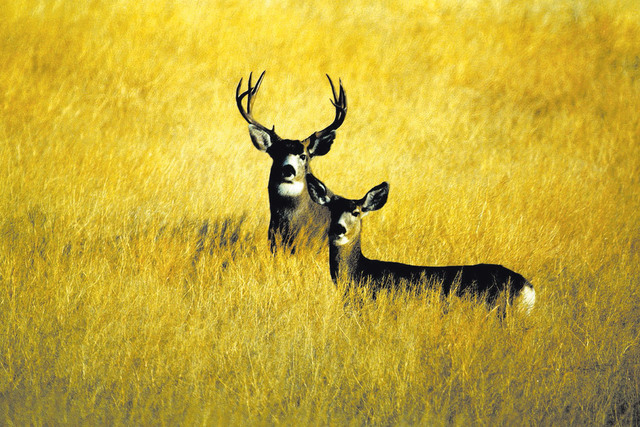Studies, science help determine big game tag quotas

It has been nearly a month since the deadline for submitting big game tag applications, so those waiting for the draw results shouldn’t have much longer to wait. But there still is a crucial step that must occur before the actual computerized drawing.
That step is the setting of big game tag quotas by the Nevada Board of Wildlife Commissioners, which will take place during the Saturday session of the board’s two-day meeting that begins Friday in Reno. During that meeting, commissioners will consider quota recommendations submitted by state wildlife biologists and suggestions from each of the 17 county Advisory Boards to Manage Wildlife and the public.
Though the meeting will take place at Truckee Meadows Community College, Southern Nevada sportsmen can watch and participate via videoconferencing at UNLV in Room 102 of the System Computing Services Building. Don’t let the size of the campus dissuade you. A map with directions to the building and the nearest parking area is included with the meeting agenda and available online (www.ndow.org/Public_Meetings/Commission/Agenda/).
Regardless of whether you attend the commission meeting, you can view the biologists’ recommendations for your preferred hunt areas at that same web address. To look beyond the numbers, however, you can view the 2014-15 Big Game Status Report, which details results of biologists’ population surveys and other factors they consider during the quota-setting process.
In Area 10, for example, the biologist documented a post-hunting season buck-to-doe ratio of 29-to-100 and a fawn-to-doe ratio of 59-to-100. That “was the highest observed fall fawn ratio since 1999 in Area 10,” the report states. That was followed by a spring survey result of 36 fawns per 100 does, which “marks the highest observed fawn recruitment in Area 10 since 2004.”
The report’s author attributes the rise in fawn numbers to “an aggressive doe harvest strategy” and suggests these observed fawn recruitment values provide evidence the mule deer population in this area has stabilized “to approximate the available habitat.”
Surveys and hunter harvest data indicate that younger bucks compose much of the male age structure in the Area 10 deer herd. Therefore, “Management recommendations will be aimed at promoting a more even age structure of adult bucks in the population and to increase opportunities (for) harvesting mature bucks.”
While increased recruitment is good, ongoing drought conditions have biologists concerned about habitat conditions. In Area 10, “Snow levels were insignificant on transition and winter ranges … even the high elevations are well below average for moisture. The Ruby Mountain and East Humboldt Range snow-pack level are about 53 percent of normal for 2014-15. Unless late season storms or significant summer precipitation occur, habitat conditions are likely to be severely compromised this year.”
In other words, Nevada needs some rain in the coming weeks and months in order for habitat conditions to support populations of deer and other wildlife. Habitat conditions not only affect deer numbers, but antler size. With insufficient browse to provide nutrients needed for antler growth, hunters might see fewer trophy-quality bucks where habitat conditions are poor. Whether they sport antlers or horns, the same is true for other big game species as well.
The Big Game Status Report provides similar information for each hunt unit and each big game species found in those units. Also included are tables documenting harvest numbers from multiple perspectives and population trends by species. The report and quota recommendations can be viewed online or downloaded to your computer or digital device.
Freelance writer Doug Nielsen is a conservation educator for the Nevada Department of Wildlife. His “In the Outdoors” column, published Thursday in the Las Vegas Review-Journal, is not affiliated with or endorsed by the NDOW. Any opinions he states in his column are his own. He can be reached at intheoutdoorslv@gmail.com.












